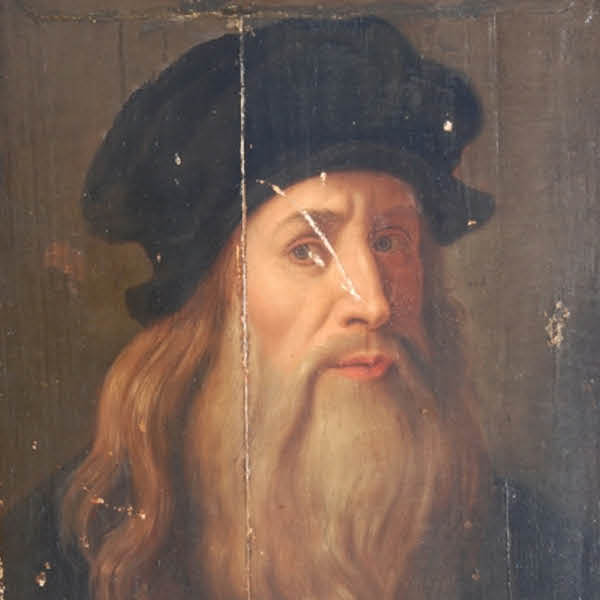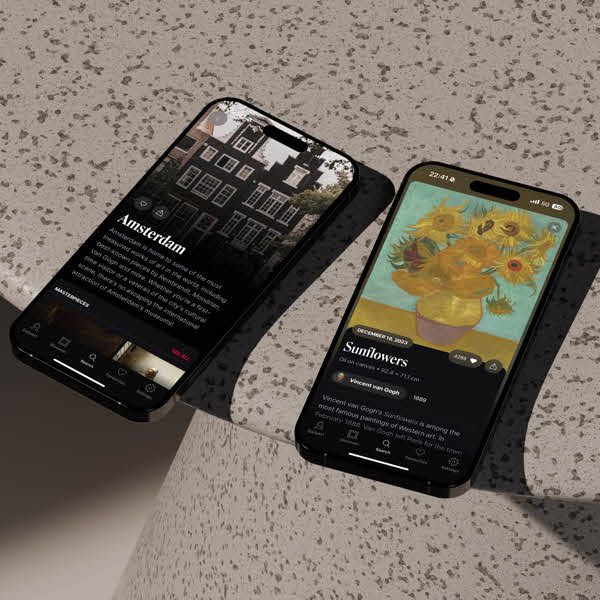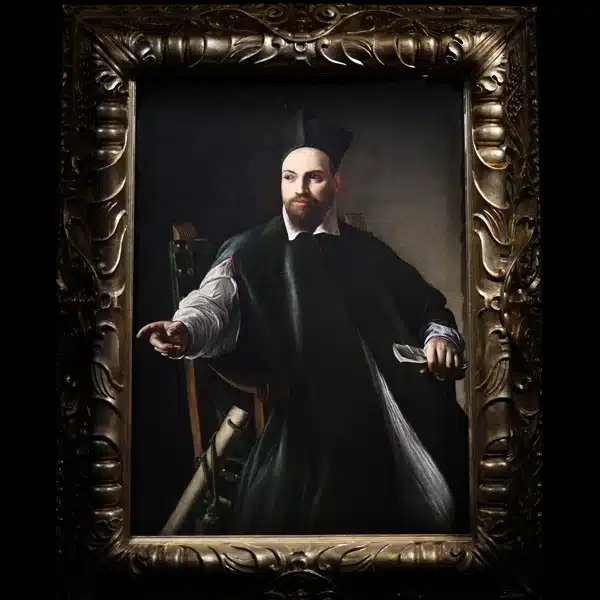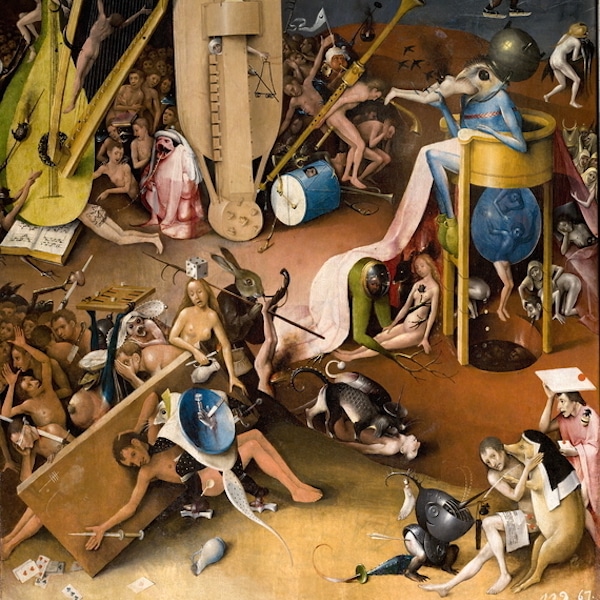The Renaissance
With a renewed interest in classical art's humanism, Renaissance artists represented Cupid as a realistic child. The figure continued to appear younger, culminating in portrayals that look like toddlers and even infants. This characteristic is apparent in both Italian and Northern Renaissance depictions, like Cupid in a Landscape and Cupid Complaining to Venus, respectively.
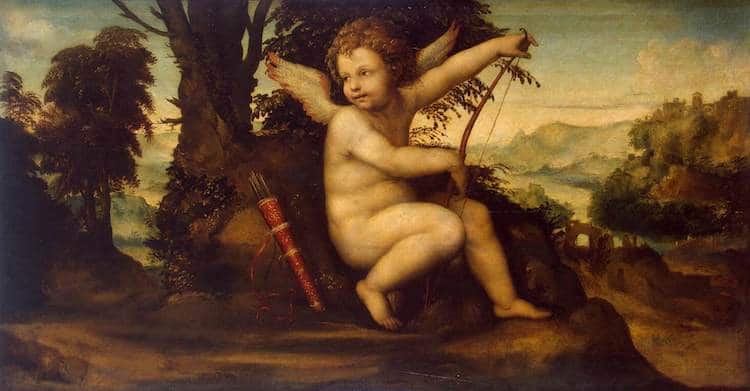
Il Sodoma, ‘Cupid in a Landscape,' c. 1510 (Photo: Web Gallery of Art via Wikimedia Commons)

Raphael, ‘Cupid Complaining to Venus,' 1525 (Photo via Wiki Art)
During the Italian Renaissance, many artists began to include several Cupids in a single painting. Known initially as amorini, these figures eventually evolved into putti, cherubic children found in many mythological and even biblical scenes of the period.
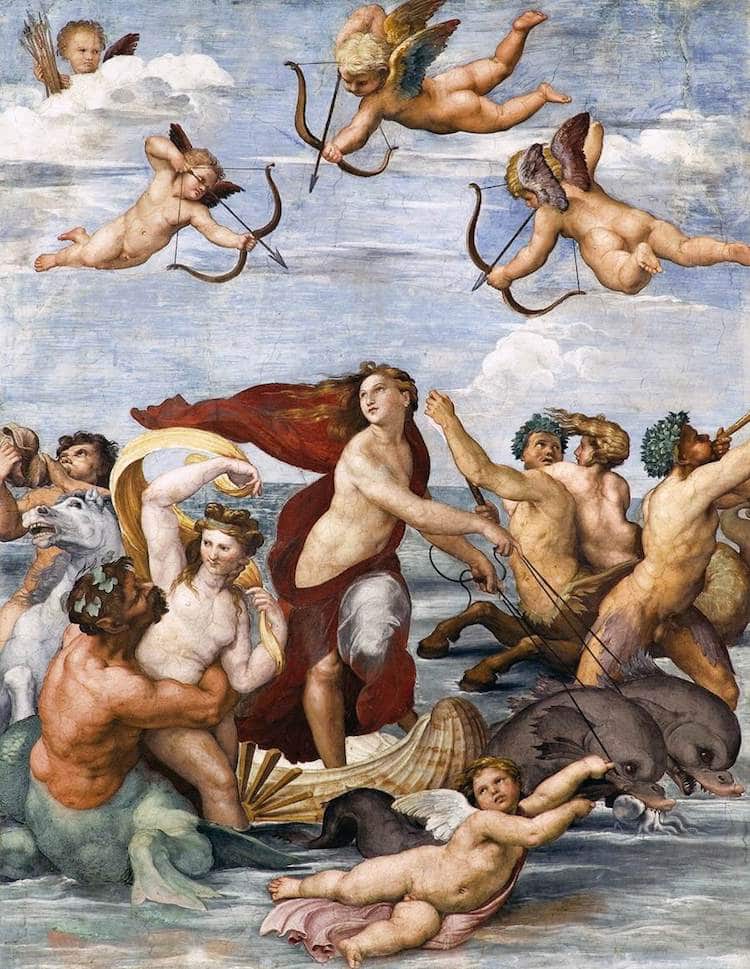
Raphael, ‘The Voyage of Galatea,' 1511 (Photo: Web Gallery of Art via Wikimedia Commons)
Baroque
During the Baroque period, artists continued to incorporate several Cupids into their mythology-inspired paintings. Unlike the amorini and putti of the Renaissance, however, the figures painted by Baroque artists appear playful, emphasizing their youth and downplaying Cupid's godly role and power.

Peter Paul Rubens, ‘The Feast of Venus,' c. 1636-1637 (Photo: Google Art Project via Wikimedia Commons)
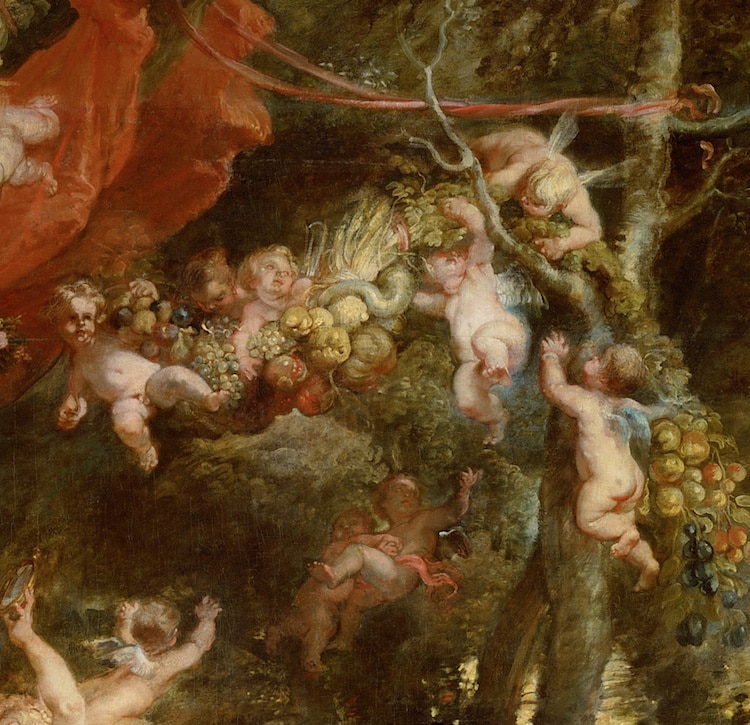
Detail
Rococo
Rococo artists also embraced this approach to Cupid. It is particularly apparent in the pastel-colored paintings of François Boucher, a French artist who incorporated groups of Cupids in most of his mythological works.

François Boucher, ‘The Toilet of Venus,' 1751 (Photo: Metropolitan Museum of Art via Wikimedia Commons
Neoclassical
This iconography remained popular throughout the Neoclassical period, a movement inspired by classical artists' sense of balance and focus on the human figure. Following this period, however, artists abandoned this approach to Cupid, opting instead for more avant-garde interpretations.

William-Adolphe Bouguereau, ‘The Birth of Venus,' 1879. (Photo: Musée d'Orsay via Wikimedia Commons)












































































